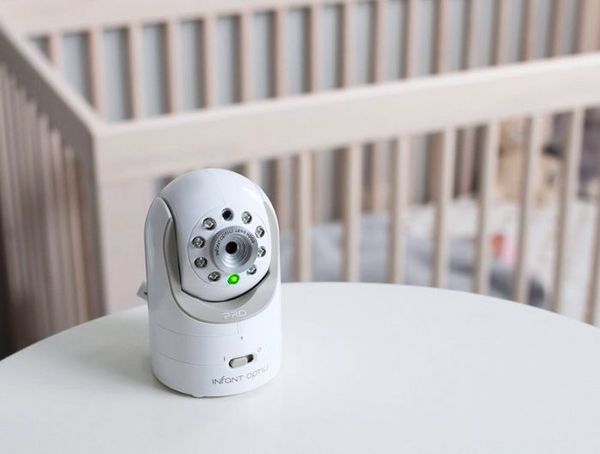Split screens offer multi-room viewing, ideal for larger homes or multiple kids. Single screens provide focused, undistracted and affordable monitoring for one child. Choose based on your family's requirements.
Learn more about their pros and cons in our blogpost.
Baby monitors are lifesavers for all of us multitasking parents and caregivers. But with so many types out there, how do you know which one is right for you? Today, we’re exploring the world of split screen and single screen baby monitors. So, get comfy and let's dive in!
Understanding Split Screen and Single Screen Baby Monitors
First off, what are these monitors anyway? A split screen baby monitor lets you view feeds from multiple cameras side-by-side on one screen. Perfect if you have twins or want to monitor different rooms. On the flip side, a single screen baby monitor displays the feed from just one camera. Simple, right?
What Is A Split Screen Baby Monitor?
A split screen baby monitor is a type of baby monitor that allows you to view two or more cameras on one screen. This means you can monitor multiple rooms or angles at the same time, without having to switch between different channels.
Some split screen baby monitors also allow you to zoom in, pan, tilt, or adjust the brightness of each camera individually.
Why Would You Need A Split Screen Baby Monitor?
This kind of baby monitor can be very useful if you have more than one child, especially if they are in different rooms or stages of development. For example, you might have a newborn who sleeps in a crib and a toddler who sleeps in a bed.
With a split screen baby monitor, you can keep an eye on both of them at the same time, and make sure they are sleeping soundly and safely.
A split screen baby monitor can also be handy if you want to monitor different areas of your home, such as the nursery, the playroom, the kitchen, or the backyard.
You can see what your kids are up to, whether they are playing nicely, making a mess, or getting into trouble. You can also talk to them through the two-way audio feature, or play lullabies or white noise to soothe them.
Advantages of Split Screen Baby Monitors
Here's why you might love a split screen monitor. Firstly, it's like having extra eyes! You can watch over your toddler in the playroom while keeping an eye on the baby napping in the nursery.
Plus, with more control and visibility, you can respond quickly if either kiddo needs you. For example, when my twins were babies, my split screen monitor was a godsend. I could see both of them at once, even when they were in separate rooms.
Disadvantages of Split Screen Baby Monitors
However, split screen monitors aren't for everyone. They can be a bit complex to use, especially if you're juggling feeds from multiple cameras. And yep, they can cost a bit more too. If you only need to monitor one child or one room, a split screen might be more than you need.
Getting to Know Single Screen Baby Monitors
On the other side of the ring, we have single screen monitors. These guys show one camera feed at a time on the display. If you have one child or a smaller space, this could be the perfect match for you. They're simple, straightforward, and generally more affordable.
Advantages of Single Screen Baby Monitors
Now, let's chat about single screen monitors. These models are usually straightforward to use - no fiddling around with multiple camera feeds. Plus, they're often more budget-friendly. When my first child was born, our single screen monitor was ideal. It did just what we needed without any confusing extras.
Disadvantages of Single Screen Baby Monitors
But remember, single screen monitors only show one view. If you need to watch over more than one child or room, you might end up needing more devices, which can be a hassle.
Key Considerations When Choosing
So, how do you choose? Think about how many rooms or children you need to monitor. Consider your budget. And ask yourself whether you prefer a simple, straightforward device or something with a bit more control and functionality.
To help you decide, here are some examples of scenarios where a split screen baby monitor or a single screen baby monitor might be more suitable:
If you have a newborn and a toddler who sleep in separate rooms, and you want to see both of them at the same time, a split screen baby monitor might be a better option for you.
If you have twins who sleep in the same bassinet, and you want to see their faces clearly, a single screen baby monitor might be a better option for you.
If you have a preschooler and a baby who play in different areas of your home, and you want to keep an eye on both of them, a split screen baby monitor might be a better option for you.
If you have a single child who sleeps in the nursery, and you want to see their surroundings clearly, a single screen baby monitor might be a better option for you.
Your Family, Your Choice
Choosing between a split screen and single screen monitor boils down to your family's needs. How many children or rooms do you need to monitor? What's your budget like? And how comfortable are you with using technology?
Remember, there's no 'one size fits all' when it comes to parenting tools. What works wonders for one family might not work for another. And that's okay. It's all about finding what makes your life as a parent easier and your child's environment safer.
Thank you for reading Mother Bear Reviews, your favorite parenting blog!









